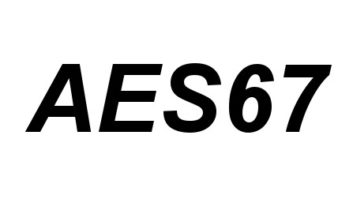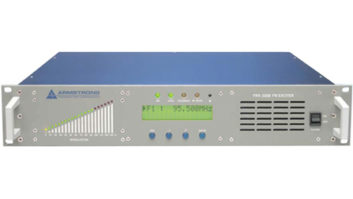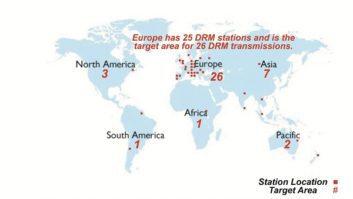The evolution of the broadcast mixing console continues. Much is written about digital consoles and IP-based systems; but analog consoles are still manufactured and sold.
Are there circumstances where it makes sense to go with an analog system?

The purpose of an audio mixer remains unchanged after all these years: It allows you to �add� or mix various dynamic audio sources to form an output program that subsequently is sent off to listeners. In the 1960s, a transition from vacuum-tube to solid-state occurred, as well as one from mono to stereo; in the 1990s, digital consoles came into play; and during the 2000s, IP-based systems entered the business.
The fact is that all accomplish the same thing; it�s just that the functional complexity of a console has greatly increased over that time. If the basic functionality is all you need, perhaps an analog console � an updated version of what one would have used in the 1930s � will suit your needs.
The most basic function of an audio mixer is that of adding multiple microphones together. Since microphones are themselves inherently analog and the end user likely will receive the program content in an analog fashion (e.g., AM or FM radio), one could make the case that there�s no functional advantage to converting everything to a digital format for the console, then re-converting just before transmission.
Even with a 24-bit digital system, the noise floor (as measured at the output side of the console) will be limited by the noise floor of the analog mic preamp; the noise floor measured for the means of transmission (again, either AM or FM) is going to be higher than that.
Analog microphones aren�t the only source coming in to a console, though. It�s like that you�ll have at least one other source, some device that plays out music and pre-recorded items (commercials or other sponsorship announcements). Here, the evolution was from live mics to records, then to taped sources, then to digitally stored sources (CDs and now playback systems). Again, none of these sources presents a compelling reason to use a digital console, because all will have left/right analog outputs in addition to digital outputs.
From an installation standpoint, wiring up sources and destinations in an AES format is much easier than the analog counterpart; there are only half as many cables, and one need not worry about left vs. right channel phase errors. Additionally, the balanced nature of the vast majority of AES sources and destinations gives fantastic noise immunity to the system.
Remote sources are the next class to examine; whether discussing telephone hybrids, or ISDN codecs, or satellite receivers, all will have analog and digital outputs, easily accommodating analog or digital console types.
What I�ve said about console input sources could be extended to the console outputs in the analog versus digital debate. The destinations typically found at a radio station will have analog and digital inputs, unless they date from the mid-1990s (or earlier of course). Again, from an installation standpoint, AES-3 (balanced) is simply easier.
THE ADDITION OF ROUTERS
When your studio facility gets large enough to necessitate audio routers of some flavor, the advantages of digital consoles become apparent.
With a multiple-studio facility, there will likely be sharing of audio sources such as ISDN and/or IP codecs, satellite receivers and other studio sources such as the outputs of a talk studio or performance studio. Two techniques traditionally have been used to accommodate these needs: distribution amplifiers and patch-bays.
A variation was the use of mechanically interlocked switches (shadow switches) for source selection. A routing system (analog or digital) performs the function of the DA and source switches because one source can be shared among multiple destinations (the DA function), and conversely, a destination (such as mix minus send back to a remote) can be switched (electronically) so that is comes from one studio or another (the shadow switch function). By placing a router controller at a new location and through the addition of two pairs of audio, one could extend all the router�s sources to anywhere in the house quite easily.
The combination of digital console plus digital router provided even more functionality for a studio because many of the digital consoles had input channels that were routable and configurable as sessions. Multiple changes in the sources of audio that appeared on a given module, or feeds that went to different destinations, could be changed on a day-part basis, which some users found to be very useful.
While it might seem as though I�m getting off-track here, my point is that the strictly analog consoles available today don�t include this type of functionality. The choice between a simple analog console and a more sophisticated digital console has a lot to do with your level of expectation as to what is possible in your studio facility.
If your facility is a relatively small stand-alone � say, with one on-air studio and a production/backup studio; or perhaps you are building an LPFM (non-commercial) station � analog consoles will likely live up to your needs and expectations. Let�s take a look at a few analog console offerings. This is certainly not a comprehensive list but gives a flavor of offerings from some of the industry�s most familiar brands.
AUDIOARTS
A familiar brand of analog consoles is Audioarts. Its AIR-4 console comes with four microphone preamps, the outputs of which can be wired to any one of the 12 stereo input fader modules (each of which have A/B input selectors). The console has a 13th fader set up for telephone calls � with a mix-minus derived to send back to the caller. Each of the fader modules has a logic output for a start function.
There are two output busses (balanced and switchable between stereo and mono) along with switchable VU meters. (Output peak level = +20 dBu). The console also has a USB connection that allows for a simple connection to PC.
The monitor section switches between PGM 1, PGM 2 or external inputs, and it has a split-cue function that sends whatever is dropped in to the cue bus to the control room left channel monitor, while L+R program continues feeding the right channel monitor. The console also comes with a studio monitor feed, with independent input selection, and a control room to studio talkback button.
Module inputs and line output wiring is accomplished on the rear via RJ-45 connectors.
ARRAKIS SYSTEMS
Arrakis Systems� ARC-15 is a 15-channel console, with two stereo program outputs, up to five mic channels and up to 12 stereo line-level inputs. The mic level inputs are accessed via XLR connectors; the line-level inputs use RJ45 style connectors.
Another input channel is dedicated to telephone, with the appropriate audio and logic connections that support a hybrid. The user can listen to the caller off-line in cue, and a talkback button allows the user to talk to the callers off-line, as well.
The program outputs are available via XLR connectors as well, and unbalanced versions of program are available via RCA-style connectors. A USB connector on the rear allows the user to record or play audio directly from the console to a PC or Mac; and, optionally, one can use Bluetooth via the 15th channel on the console to connect directly to a smartphone, giving the user one more option in terms of getting callers on the air.
RADIO SYSTEMS MILLENNIUM SERIES
The Radio Systems Millennium series comes in six-, 12-, 18- or 24-channel versions.
Audio inputs are balanced instrumentation amps, with gains that can be set to accommodate input levels from �60 dBm up to +10 dBm (max input peak level is +22 dBm).
There are three output busses (program, audition and mono), actively balanced with an output peak level of +22 dBm. (Optionally, you can add a DA card, or a dual-mix minus, or four output mix-minus boards.)
Each console includes a monitor section, allowing studio monitors and headphones to select any program or cue source, as well as up to four remote monitor inputs.
Additionally, there is an eight-position switcher panel that can be used to control any external device remotely using one of eight closures and LED indicators, or as the control for the (optional) four-source audio switcher or (optional) intercom selector card. The console I/O wiring is done via five-pin removable barrier strips.
GATESAIR
This company, part of what used to be Harris Broadcast, has an analog offering. Its Flexiva Oasis is a stand-alone audio console for on-air or production studios.
It comes in eight- or 12-channel versions, with four mic preamps. Other input card options include balanced analog (with A/B inputs); an AES A/B input and finally an USB/AES A/B input card. Oasis has two program busses (with analog and digital outputs) with switchable metering; two optional telco faders; optional 8X1 remote line selectors; and a USB interface for playback and recording. The console supports the �studio/control room� function since it comes with studio monitor and headphone outputs; talkback to studio; control room and studio logic; and optionally, studio remote monitor level controls. Maximum line level input is +24 dBu; maximum line output level is +24 dBu. Digital outputs are of the AES-3 standard, 44.1 kHz sample rate, 24-bit word.
SANDIES
The Dynamax line of analog audio consoles is built by Sandies. The MX series comes in eight-, 12- and 18-module frame sizes; it�s all modular construction, so channel modules can be added or removed without shutting down. The console comes with two stereo and two mono mix busses, with metering for each. The standard configuration is for two mic channels, though the console can be loaded with more of those as necessary. Line-level channels have A and B inputs with individual level adjustments and independent remote ON/OFF logic. MX also comes with two 4X1 input selector switches. Maximum input and output line levels are +24 dBu; mic inputs are adjustable from �65 to �35 dbu; line levels, from �15 to +10 dBu.
The decision between analog and digital consoles boils down to the level of functionality a radio station needs, and its size. For small commercial operations, small non-commercial operations and LPFM stations, I see no compelling reason to go with digital consoles. In smaller operations such as these, cost obviously is a factor, and some relief will be gained by going with analog consoles.
With careful study of the available products, and by knowing exactly what is needed for a given station, an engineer can provide for great functionality that will satisfy all concerned.





